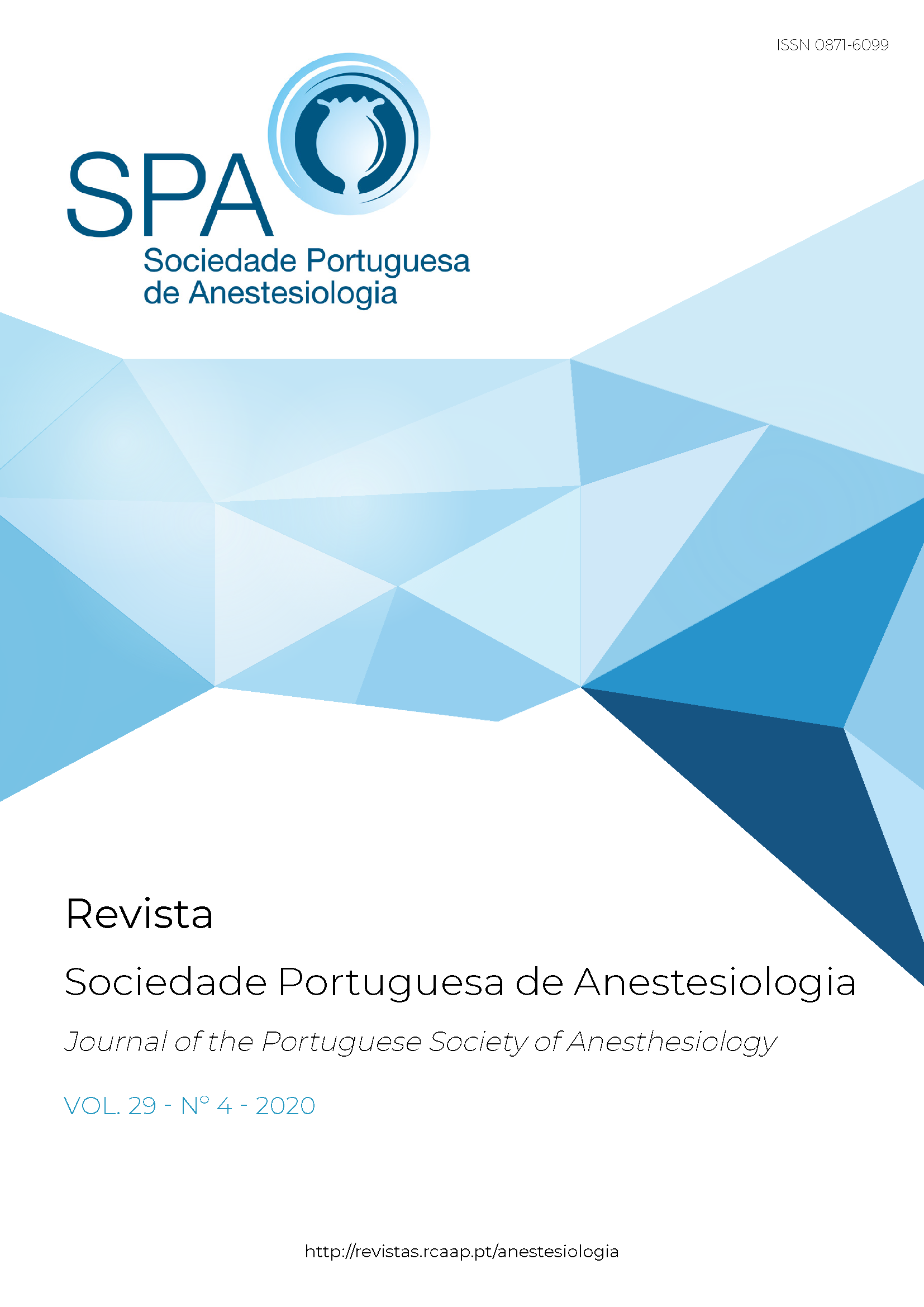Hipertermia Maligna – Protocolo de Atuação do Centro Hospitalar de Lisboa Ocidental
DOI:
https://doi.org/10.25751/rspa.20047Keywords:
Malignant Hyperthermia; Clinical Management Protocol; SimulationAbstract
Introduction: Malignant hyperthermia, although rare, is one of the most serious anesthetic emergencies, with potentially catastrophic clinical implications. Knowledge of its pathophysiology and early recognition and treatment by the professionals involved is essential. At Centro Hospitalar de Lisboa Ocidental, the concern for a systematized approach dates back almost 40 years, and the Malignant Hyperthermia protocol and its car have been implemented and constantly updated ever since. This article aims to describe the reality at the Centro Hospitalar de Lisboa Ocidental and expose the evolution of our approach, protocoled and simulated, according to good clinical practice and safety rules, and based on current scientific evidence.
Material and Methods: Creation of an institutional protocol and a specific Malignant Hyperthermia car, with all the necessary equipment and drugs, organized by each health professional involved. Finally, training of all the professionals through implementation of periodic clinical simulations.
Results: Updated and synthesized information, allowing for a quick action during a Malignant Hyperthermia emergency. Transmission of knowledge and training of technical and non-technical skills through clinical simulation actions.
Discussion/Conclusions: The existence of institutional protocols as well as the standardization and availability of all material and drugs in a specific car in the different places where anaesthetic techniques are performed, allows a faster, more efficient and organized performance. Likewise, the training of all the elements of an operating room, based on training and simulations, is an essential cornerstone for success in clinical practice.
Downloads
References
2. Larach MG, Klumpner TT, Brandom BW, Vaughn MT, Belani KG, Herlich A, et al. Succinylcholine Use and Dantrolene Availability for Malignant Hyperthermia Treatment – Database Analyses and Systematic Review. Anesthesiology. 2019; 130: pp. 41-54.
3. Berkenstadt H, Yusim Y, Ziv A, Ezri T, Perel A. An Assessment of a Point-of-Care Information System for the Anesthesia Provider in Simulated Malignant Hyperthermia Crisis. Anesthesia & Analgesia. 2006; 102: pp. 530-532.
4. Gupta PK, Hopkins PM. Diagnosis and management of malignant hyperthermia. British Journal of Anaesthesia Education. 2017; 17(7): pp. 249-254.
5. Cain C, Riess ML, Lynn G, Novalija J. Malignant Hyperthermia Crisis: Optimizing Patient Outcomes through Simulation and Interdisciplinary. AORN Journal. 2014 February; 99(2): pp. 301-311.
6. Glahn KPE, Ellis FR, Halsall PJ, Muller CR, Snoeck MMJ, Urwyler A, et al. Recognizing and managing a malignant hyperthermia crisis: guidelines from the European Malignant Hyperthermia Group. British Journal of Anaesthesia. 2010; 105(4): pp. 417-420.
7. Butala B. BM, CD. Malignant Hyperthermia: Review of Diagnosis and Treatment during Cardiac Surgery with Cardiopulmonary Bypass. Journal of Cardiothoracic and Vascular Anesthesia. 2018; 32(6): pp. 2771-2779.
8. Hirshey-Dirksen SJ, Van Wicklin SA, Mashman DL, Neiderer P, Merritt DR. Developing effective drills in preparation for a malignant hyperthermia crisis. AORN Journal. 2013 Mar; 97(3): pp. 329-353.
9. Silva CR. Website da Universidade do Porto. [Online]; 2016 [cited 2019 September 22. Available from: https://sigarra.up.pt/ffup/pt/pub_geral.show_file?pi_doc_id=71390.
10. Hopkins PM. Malignant hyperthermia: advances in clinical management and diagnosis. British Journal of Anaesthesia. 2000; 85: pp. 118-128.
11. Hopkins PM, Ruffert H, Snoeck MM, Girard T, Glahn KP, Ellis FR, et al. European Malignant Hyperthermia Group Guidelines for investigation of malignant hyperthermia susceptibility. British Journal of Anaesthesia. 2015; 115: pp. 531–539.
12. Website de Association of Anaesthetists of Great Britain and Ireland. [Online]; 2011 [cited 2019 September 22. Available from: https://anaesthetists.org/Portals/0/PDFs/Guidelines%20PDFs/Guideline_malignant_hyperthermia_laminate_2011_final.pdf?ver=2018-07-11-163754-770&ver=2018-07-11-163754-770.
13. Website de Association of Anaesthetists of Great Britain & Ireland. [Online]; 2011 [cited 2019 September 22. Available from: https://anaesthetists.org/Portals/0/PDFs/Guidelines%20PDFs/Guideline_malignant_hyperthermia_crisis_task_allocations_recommended_contents_2011_final.pdf?ver=2018-07-26-141732-360&ver=2018-07-26-141732-360.
14. Østergaard D, Dieckmann P, Lippert A. Simulation and CRM. Best Practice & Research Clinical Anaesthesiology. 2011; 25: pp. 239 – 249.
15. Flin R, Patey R, Glavin R, Maran N. Anaesthetists’ non-technical skills. British Journal of Anaesthesia. 2010. 105: pp. 38–44
Downloads
Published
How to Cite
Issue
Section
License
Articles are freely available to be read, downloaded and shared from the time of publication.
The RSPA reserves the right to commercialize the article as an integral part of the journal (in the preparation of reprints, for example). The author should accompany the submission letter with a declaration of copyright transfer for commercial purposes.
Articles are published under the terms of the Creative Commons Attribution Non-Commercial License (CC BY-NC).
After publication in RSPA, authors are allowed to make their articles available in repositories of their home institutions, as long as they always mention where they were published.


